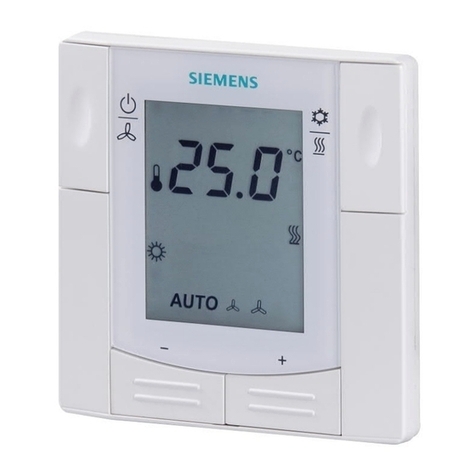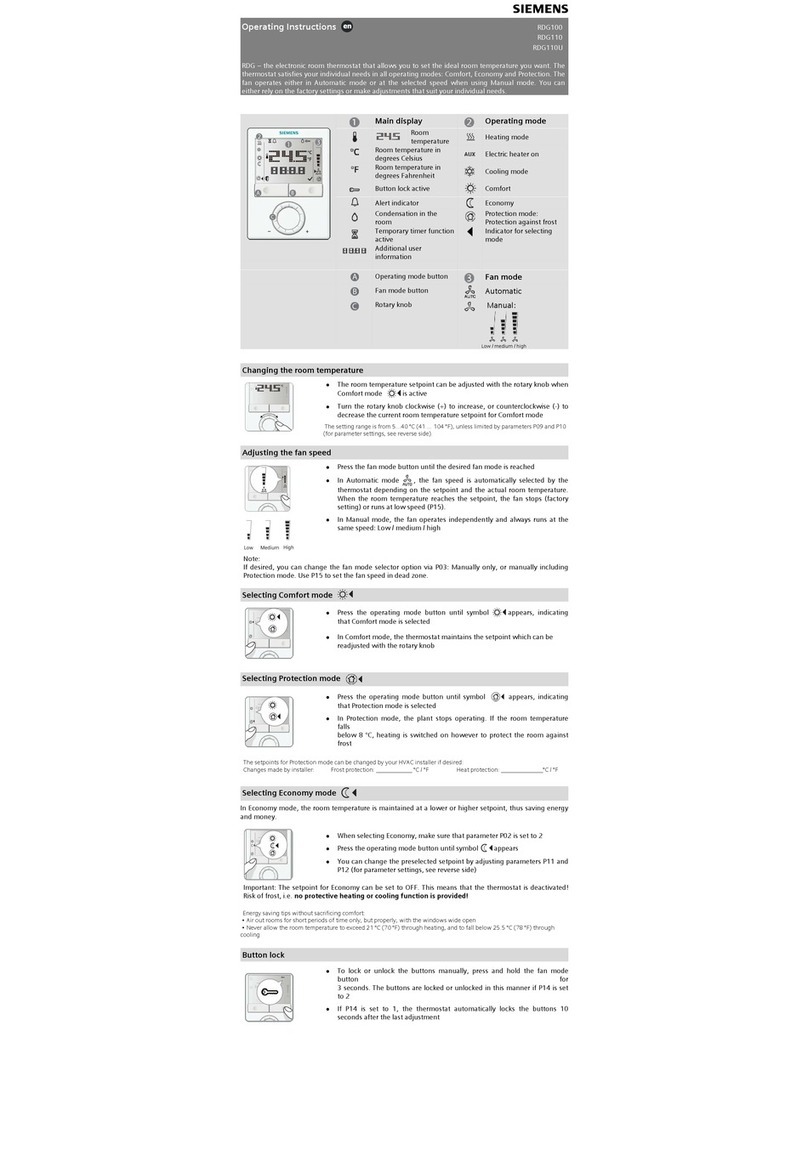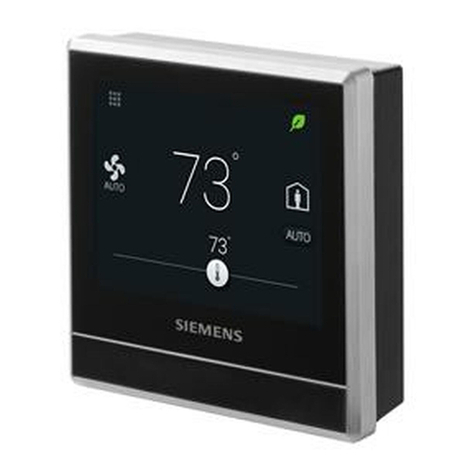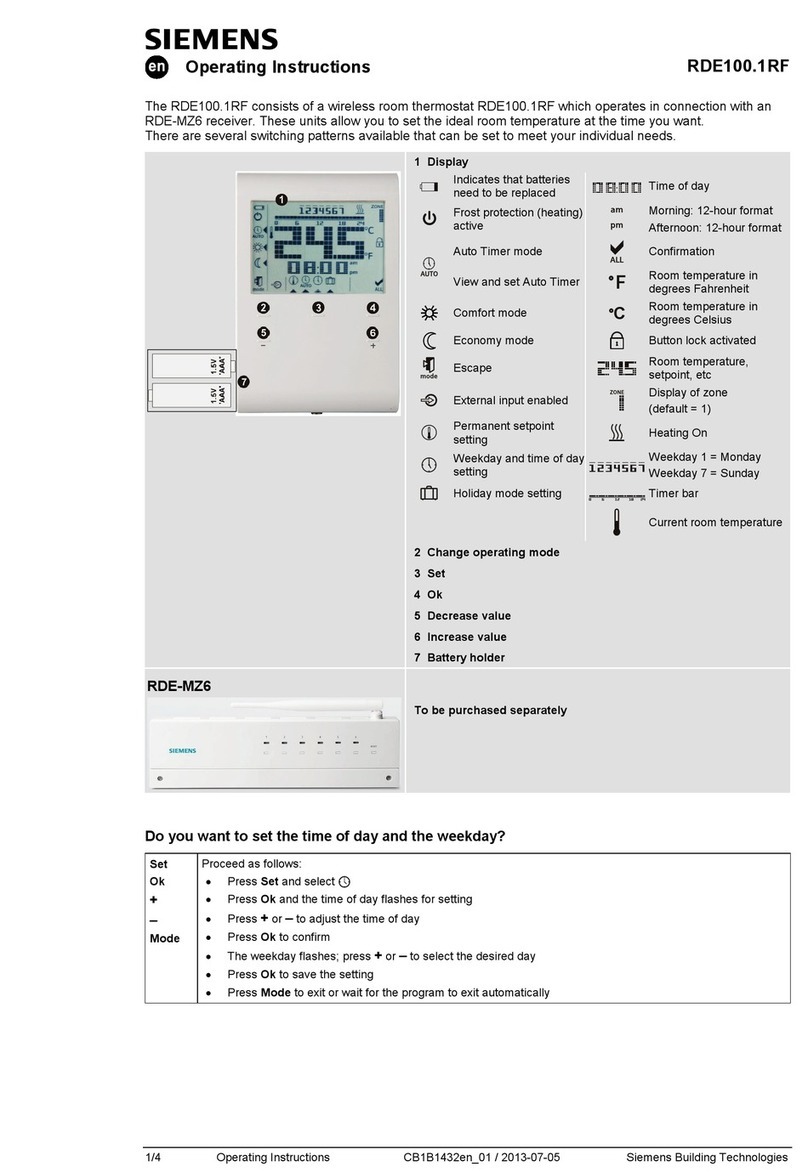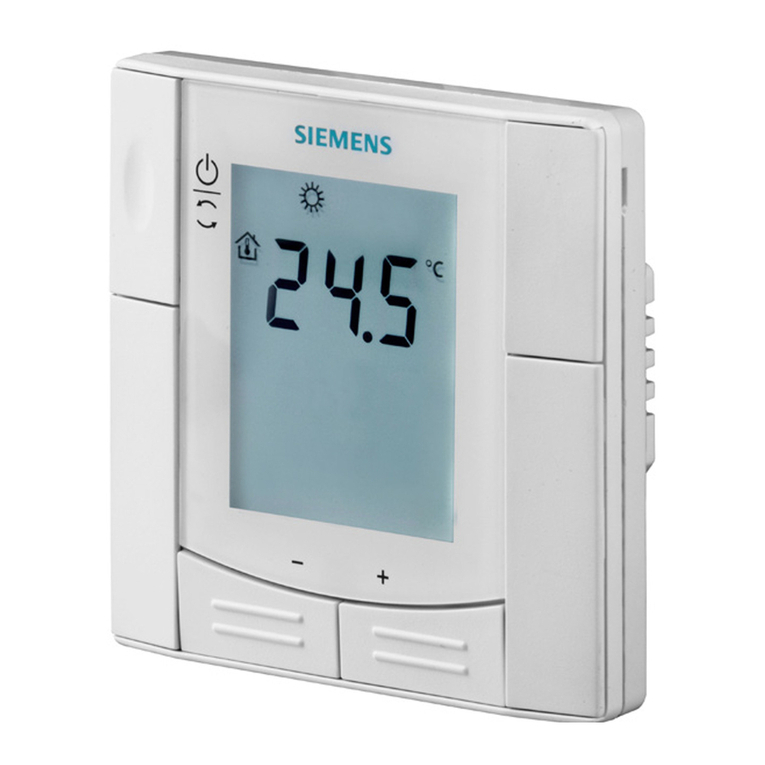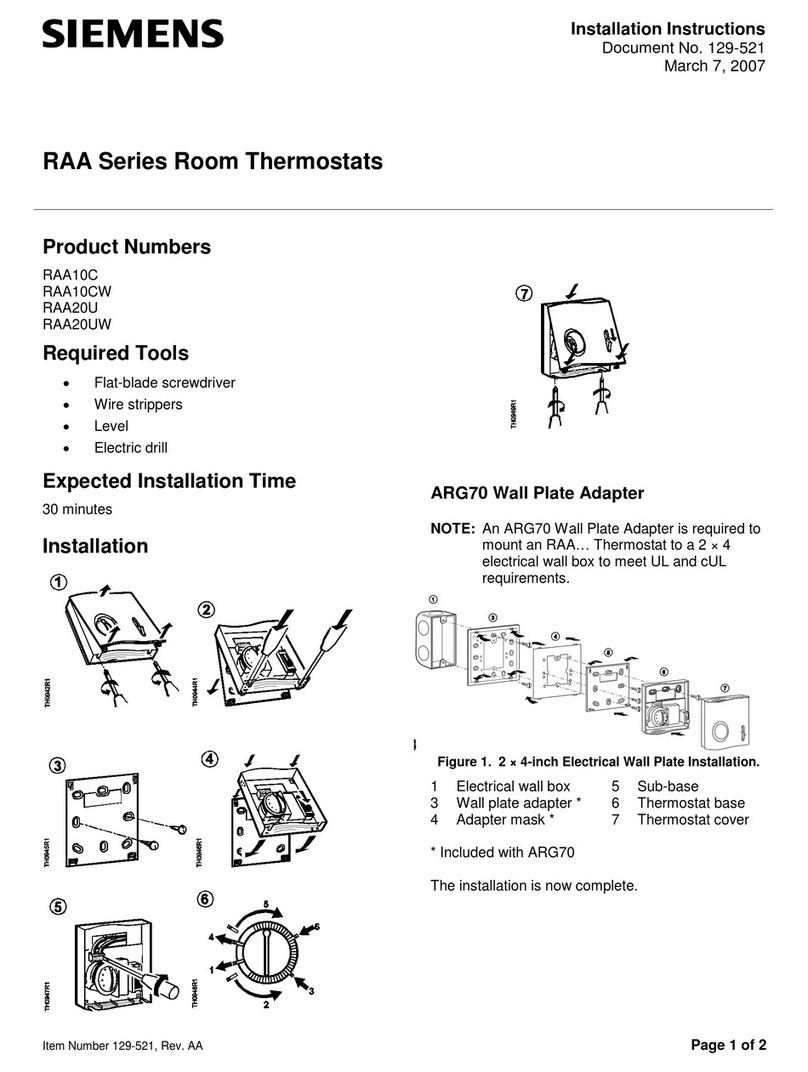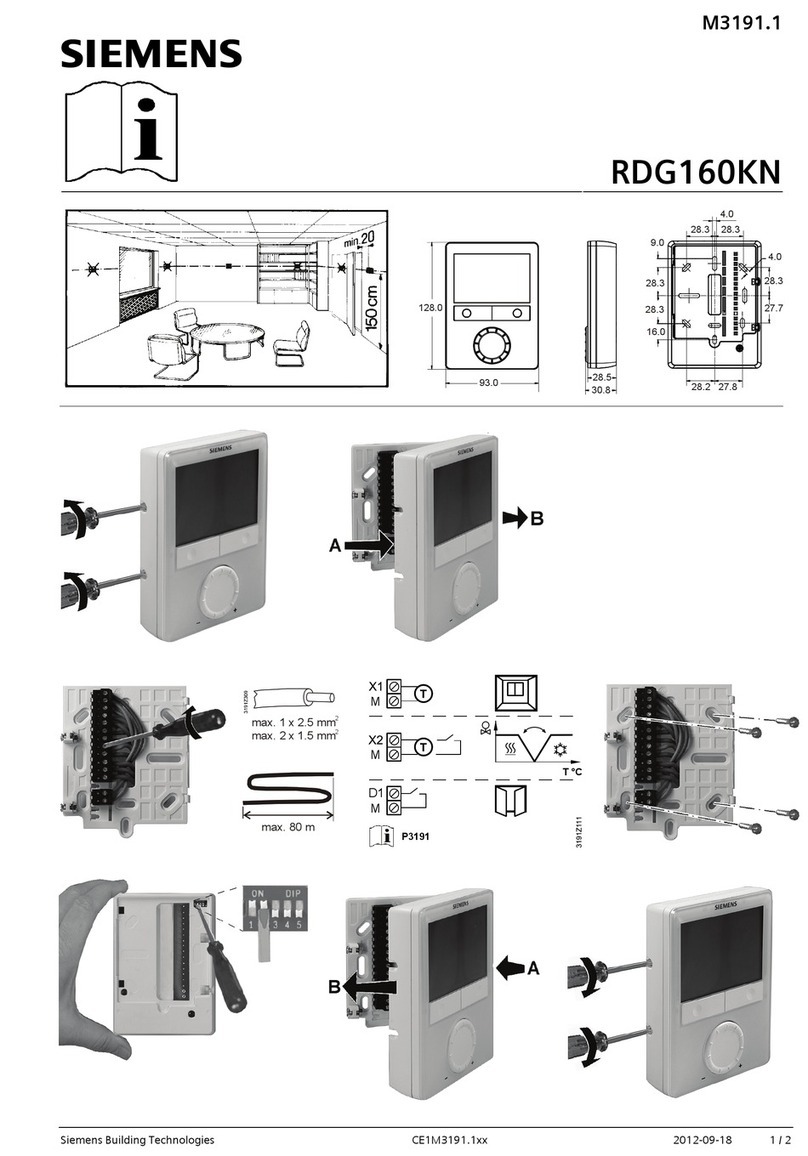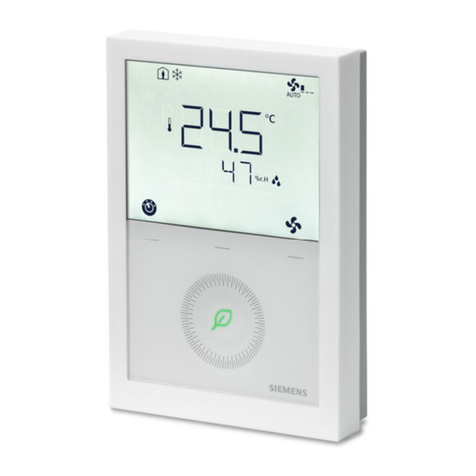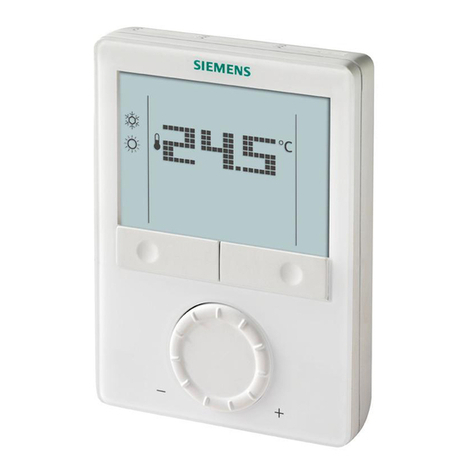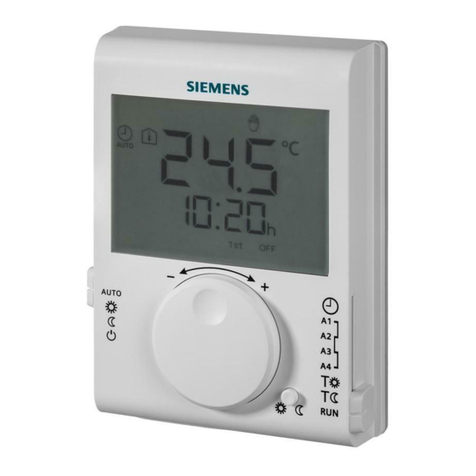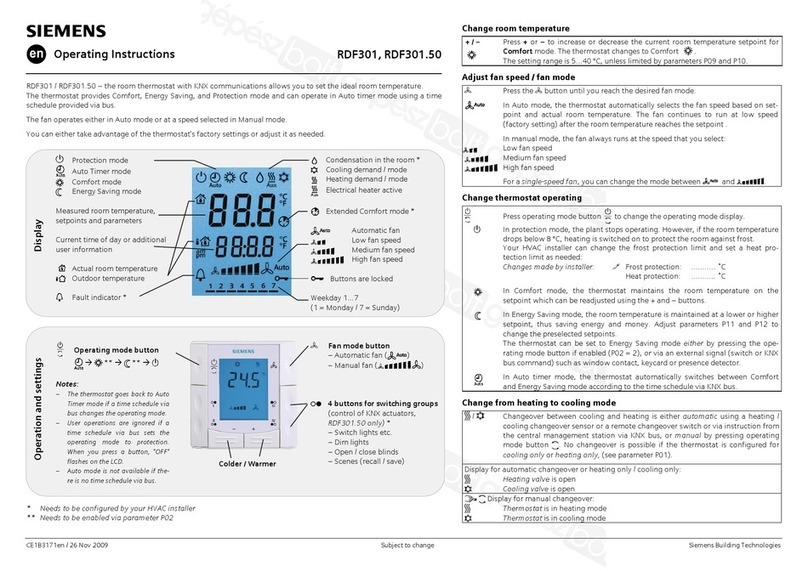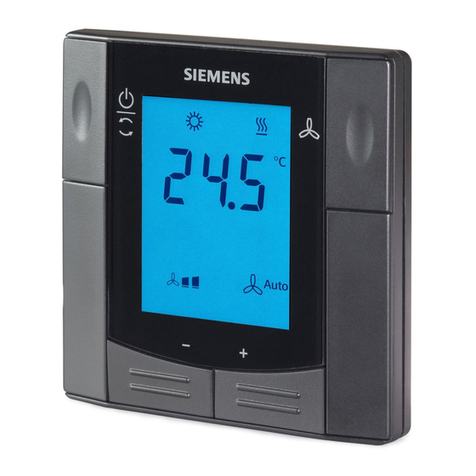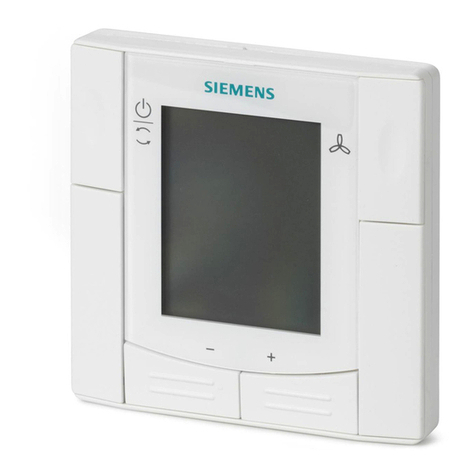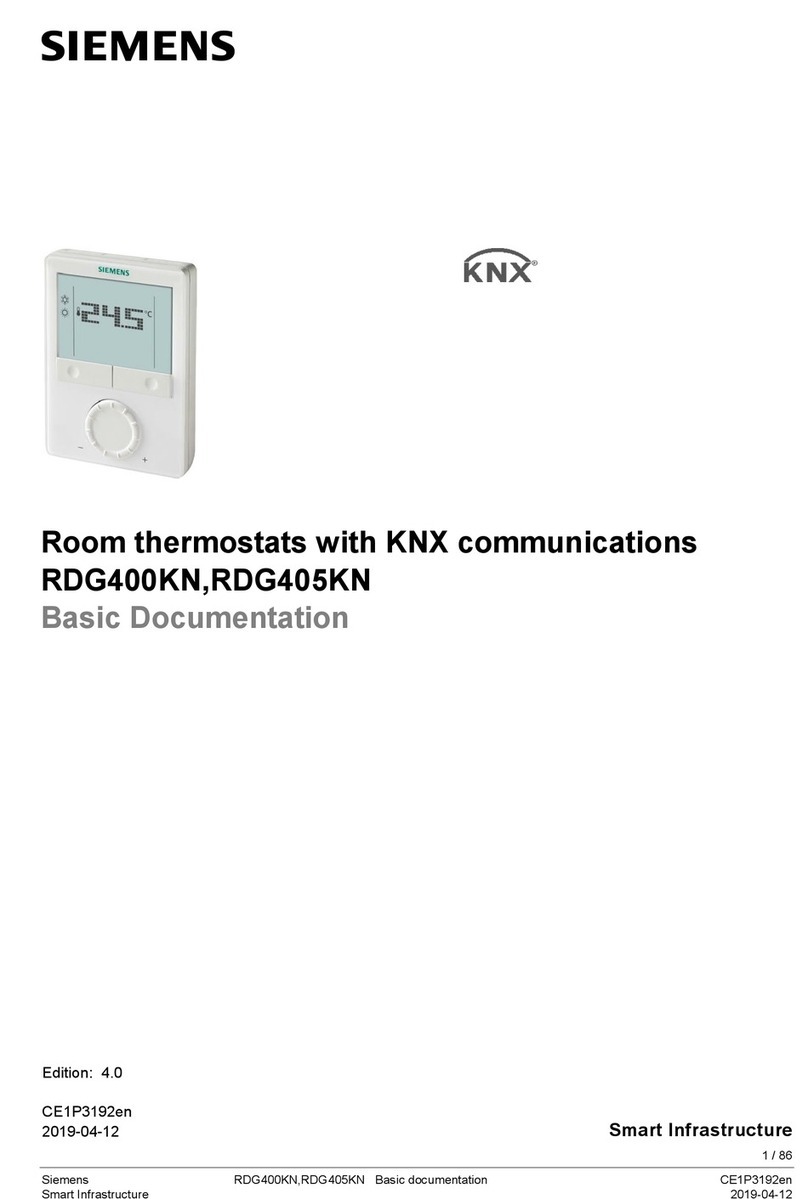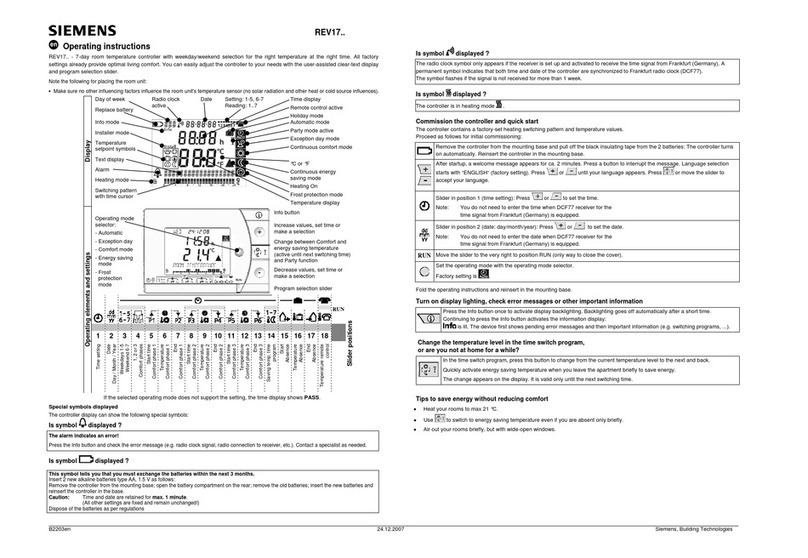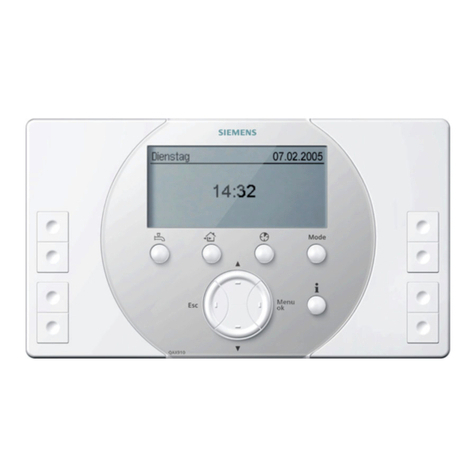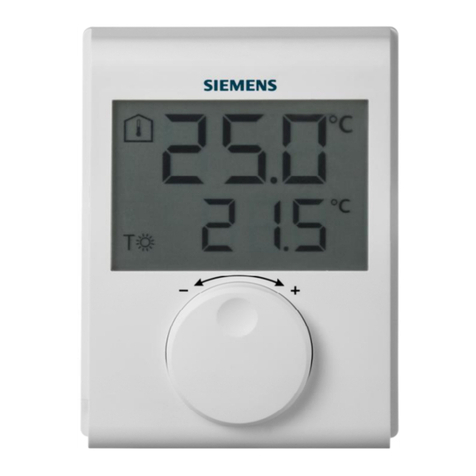
129-075
Installation Instructions
Rev. 2, November, 1999
Siemens Building Technologies, Inc.
..
.P
PP
Pa
aa
age
gege
ge 3
33
3o
oo
of
ff
f4
44
4
T
TT
The
hehe
her
rr
rm
mm
mo
oo
om
mm
me
ee
et
tt
te
ee
er
rr
rC
CC
Ca
aa
ali
lili
lib
bb
br
rr
ra
aa
at
tt
ti
iiio
oo
on
nn
n
1. Use a test thermometer to read the current room
temperature.
2. Place a screwdriver in the center of the thermometer
assembly (Figure 4). Carefully rotate the thermometer
assembly until the pointer tip indicates the correct
room temperature.
N
NN
NO
OO
OT
TT
TE
EE
E:
::
: Avoidbreathingonortouchingthebimetal
spiral since this affects the temperature
reading.
L
LL
Li
iiim
mm
mi
iiit
tt
tS
SS
St
tt
top
opop
op A
AA
Ad
dd
dj
jjju
uu
us
ss
st
tt
tm
mm
men
enen
ent
tt
t
Thermostat limit stops define the minimum and maximum
thermostat set points. The limit stops engage in the set
point cam gear teeth and cause interference between the
set point cam gear and the adjustment knob gear.
To change the limit stop settings, use a needle nose pliers
to pull the limit stop (Figure 4) between the set point cam
gear teeth. Do not pull the limit stop any more than
necessary to clear the gear teeth. Rotate the limit stop to
its new position. Changing the limit stop position one gear
tooth changes the limit stop setting by 1-1/3°F(0.7°C).
S
SS
Sen
enen
ensi
sisi
sit
tt
tiv
iviv
ivi
iiit
tt
ty
yy
yA
AA
Ad
dd
dj
jjju
uu
us
ss
st
tt
tm
mm
me
ee
en
nn
nt
tt
t
The factory thermostat sensitivity setting is approximately
2.5 psi/°F (31 kPa/°C). To change the sensitivity, use a flat
blade screwdriver to carefully move the sensitivity slide
(Figure 4) to the desired position as follows:
Graduation closest
to the rigid end of
the bimetal element
4psi/
°F (50 kPa/°C)
Graduation closest to
the minimum (MIN) end
of the bimetal element
1psi/
°F (12 kPa/°C)
N
NN
NO
OO
OT
TT
TE
EE
E:
::
: If the thermostat sensitivity is adjusted,
recalibrate the thermostat.
F
FF
Fi
iiigu
gugu
gur
rr
re
ee
e4
44
4.
..
.T
TT
TH
HH
H1
11
19
99
92
22
2S
SS
ST
TT
The
hehe
her
rr
rm
mm
mo
oo
os
ss
st
tt
ta
aa
at
tt
tD
DD
De
ee
et
tt
ta
aa
ai
iiils
lsls
ls.
..
.
T
TT
The
hehe
her
rr
rm
mm
mo
oo
os
ss
st
tt
ta
aa
at
tt
tC
CC
Ca
aa
ali
lili
lib
bb
br
rr
ra
aa
at
tt
ti
iiion
onon
on
The thermostat is factory calibrated to a control pressure of
7.5 psi (52 kPa) when the set point and the ambient
temperature are both at 72°F (22°C). No adjustments are
required if these settings are appropriate.
If the thermostat has been tampered, the sensitivity
changed, or it is out of adjustment, use the following steps
to recalibrate the instrument.
The output pressure test port (Figure 5) is accessible
without removing the thermostat cover through the 8th
opening:
•Forone-pipethermostats,thetestportisontheright
side.
•For two-pipe thermostats, the test port is on the left
side.
CA
CACA
CAU
UU
UT
TT
TIO
IOIO
ION
NN
N:
::
:
If you use the wrong test port, thermostat
damage can occur and result in
replacement of the device.
1. Make certain that the air supply is 25-30 psi
(172-207 kPa).
2. Remove the cover using the calibration tool. Verify that
the room temperature is between 70 and 80°F(21and
27°C).
3. Verify that the supply pressure is 18 psi (124 kPa). Set
the dial to the room temperature by turning the
exposed adjustment knob or using a hex key. Allow
the thermostat to stand for about five minutes to
adjust to the new setting.
4. Moisten the needle and insert the test gauge and
needle adapter in the output pressure test port
(Figure 5). Read the control pressure.
5. If the control pressure does not read 7 to 8 psi (48 to
55 kPa), turn the calibration screw (Figure 4)usingthe
calibration tool or a 1/8-inch (3.2 mm) wrench until the
pressure is 7 to 8 psi (48 to 55 kPa). The sensing
element is now in calibration and the set point can be
changed to the desired room temperature.
F
FF
Fi
iiigu
gugu
gur
rr
re
ee
e5
55
5.
..
.T
TT
TH
HH
H1
11
19
99
92
22
2S
SS
ST
TT
The
hehe
her
rr
rm
mm
mo
oo
os
ss
st
tt
ta
aa
at
tt
tO
OO
Ou
uu
ut
tt
tp
pp
pu
uu
ut
tt
tP
PP
Pr
rr
re
ee
es
ss
ss
ss
su
uu
ur
rr
re
ee
eT
TT
Te
ee
es
ss
st
tt
tP
PP
Po
oo
ort
rtrt
rt.
..
.

